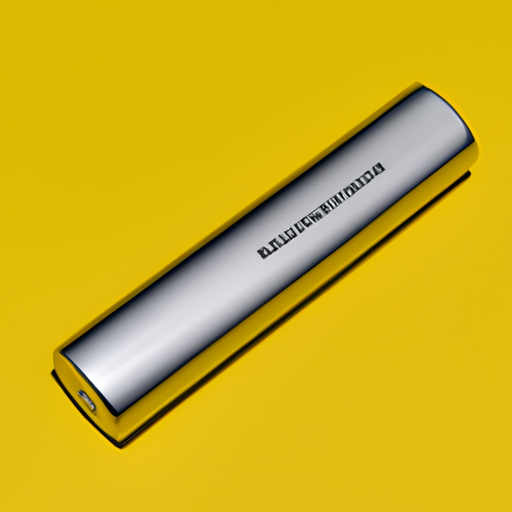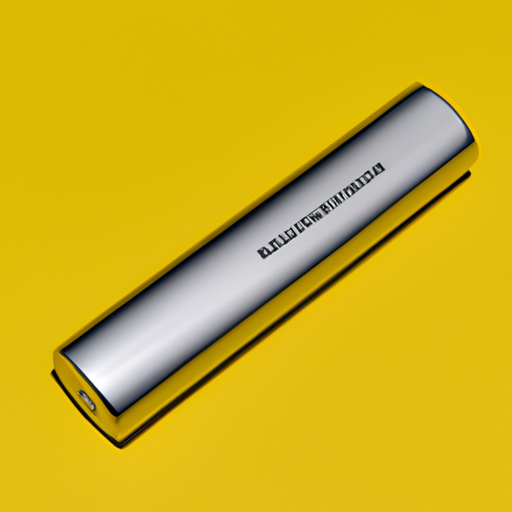In this article, we will discuss whether there are any eco-friendly alternatives to disposable batteries. We will explore different options that can help reduce waste and minimize harm to the environment. By the end, you will have a better understanding of the choices available and their benefits for a more sustainable future.
Introduction
Welcome! In this article, we will explore various eco-friendly alternatives to disposable batteries. We all rely on batteries for various devices in our daily lives, but the environmental impact of disposable batteries cannot be ignored. Their production and disposal contribute to pollution and waste. However, there are several sustainable options available that not only reduce our carbon footprint but also save us money in the long run. Let’s dive in!
Overview of Disposable Batteries
Disposable batteries, also known as primary batteries, are designed for single use and cannot be recharged. These batteries are commonly found in everyday devices such as remote controls, flashlights, and toys. While they are convenient, they pose several environmental challenges. Disposable batteries contain toxic materials like mercury, cadmium, and lead, which can seep into the soil and water supply if not properly disposed of. Additionally, manufacturing disposable batteries requires a significant amount of energy and resources.

Importance of Eco-Friendly Alternatives
With the increasing concern for the environment and the need for sustainable solutions, it is important to explore eco-friendly alternatives to disposable batteries. These alternatives not only reduce waste and pollution but also offer long-term cost savings. By transitioning to sustainable battery options, we can make a positive impact on the environment and contribute to a more sustainable future.
1. Rechargeable Batteries
Advantages of Rechargeable Batteries
Rechargeable batteries are an excellent choice as an eco-friendly alternative to disposable batteries. They can be used multiple times, reducing waste and the need for frequent battery replacements. By investing in rechargeable batteries, you can significantly reduce your carbon footprint. Rechargeable batteries also offer cost savings in the long run, as they can be recharged hundreds or even thousands of times.
Different Types of Rechargeable Batteries
There are several types of rechargeable batteries available in the market. The most common ones include nickel-metal hydride (NiMH) and lithium-ion (Li-ion) batteries. NiMH batteries are suitable for low-drain devices such as remote controls and digital cameras. Li-ion batteries, on the other hand, are more commonly used in high-drain devices such as smartphones, laptops, and electric vehicles.
How to Properly Use and Maintain Rechargeable Batteries
To ensure the longevity and optimal performance of rechargeable batteries, it is important to use and maintain them properly. Follow these tips:
-
Use the right charger: Always use the charger specifically designed for the type of rechargeable battery you are using. This will prevent overcharging and potential damage to the battery.
-
Fully discharge before recharging: For nickel-metal hydride batteries, it is recommended to fully discharge them before recharging. This helps prevent memory effect and ensures a longer lifespan.
-
Avoid extreme temperatures: Rechargeable batteries perform best within a certain temperature range. Avoid exposing them to extremely high or low temperatures, as it can affect their performance and overall lifespan.

2. Solar-Powered Batteries
How Solar-Powered Batteries Work
Solar-powered batteries, also known as solar batteries or solar energy storage systems, work by converting sunlight into electrical energy. They consist of a solar panel that captures sunlight and converts it into electricity, which is then stored in the battery for later use. Solar-powered batteries offer a sustainable and renewable energy solution, as they rely on the sun’s energy as their primary power source.
Benefits and Limitations of Solar-Powered Batteries
Solar-powered batteries have several advantages. They are environmentally friendly, as they do not rely on non-renewable resources and produce zero emissions during operation. They also provide energy independence, allowing users to generate their own electricity and reduce reliance on the grid. Additionally, solar-powered batteries offer a reliable backup power source during outages.
However, solar-powered batteries have some limitations. They require adequate sunlight for efficient charging, so their performance may be affected in areas with less sunlight or during cloudy days. They also require larger upfront investments compared to disposable batteries, although they offer long-term cost savings.
Applications and Use Cases of Solar-Powered Batteries
Solar-powered batteries are suitable for a wide range of applications. They are commonly used in residential homes and commercial buildings to store excess solar energy generated during the day for later use. Solar-powered batteries can also be used in off-grid locations or during outdoor activities, providing a portable and sustainable power source. In remote areas or developing countries with limited access to electricity, solar-powered batteries can be a game-changer, bringing power to communities in a sustainable way.
3. Fuel Cells
Explanation of Fuel Cells
Fuel cells are devices that convert chemical energy from a fuel source into electrical energy through an electrochemical reaction. They operate like batteries, but instead of storing electricity, they continuously generate it as long as there is a supply of fuel. The most common fuel used in fuel cells is hydrogen, but other fuels such as methanol and natural gas can also be used.
Comparison of Fuel Cells with Disposable Batteries
Fuel cells offer several advantages over disposable batteries. They can produce electricity more efficiently and continuously as long as there is a supply of fuel, whereas disposable batteries have a limited lifespan. Fuel cells also have a higher energy density, meaning they can store more energy in a smaller space compared to disposable batteries. Additionally, fuel cells produce electricity through a clean electrochemical reaction, emitting only water vapor and heat, thereby reducing pollution.
Pros and Cons of Fuel Cells as an Eco-Friendly Alternative
Fuel cells have numerous benefits as an eco-friendly alternative to disposable batteries. They offer higher energy efficiency, lower greenhouse gas emissions, and reduced dependency on fossil fuels. Fuel cells can be used in a wide range of applications, including transportation, stationary power generation, and portable electronics.
However, fuel cells also have some limitations. The production and infrastructure required for utilizing hydrogen as a fuel source can be challenging and costly. Additionally, the storage and transportation of hydrogen can be complex, and safety concerns need to be addressed. Despite these challenges, ongoing research and development aim to improve fuel cell technology and make it more accessible for widespread use.

4. Mechanical Energy Storage
Overview of Mechanical Energy Storage Systems
Mechanical energy storage systems store energy in various forms of kinetic or gravitational potential energy. These systems use the stored energy to produce electricity when needed. Examples of mechanical energy storage systems include flywheels, compressed air energy storage, and pumped hydroelectric storage.
Types of Mechanical Energy Storage Devices
-
Flywheels: Flywheels store energy in the form of rotational kinetic energy. They consist of a rotating disk or wheel, which accelerates when energy is inputted and decelerates when energy is extracted.
-
Compressed Air Energy Storage (CAES): CAES systems store energy by compressing air and storing it in underground reservoirs. When electricity is needed, the compressed air is released, expanding and driving a turbine to generate electricity.
-
Pumped Hydroelectric Storage: Pumped hydroelectric storage utilizes two reservoirs at different elevations. During times of excess electricity generation, water is pumped from a lower reservoir to an upper reservoir. When electricity is needed, the stored water is released, flowing downhill and driving turbines to generate electricity.
Examples of Mechanical Energy Storage Applications
Mechanical energy storage systems have various applications. Flywheels are used in uninterruptible power supplies (UPS), where they provide backup power during outages. Compressed Air Energy Storage systems are suitable for grid-scale energy storage, reducing the need for fossil fuel power plants during peak demand. Pumped hydroelectric storage is commonly used in hydroelectric power plants, providing a reliable and efficient means of energy storage.
5. Hydrogen Fuel Cells
Introduction to Hydrogen Fuel Cells
Hydrogen fuel cells have gained attention as a promising eco-friendly alternative to disposable batteries. They utilize hydrogen as a fuel source and generate electricity through an electrochemical reaction. Hydrogen fuel cells produce electricity, water, and heat and emit no harmful pollutants during operation.
Advantages and Challenges of Hydrogen Fuel Cells
Hydrogen fuel cells offer several advantages. They have high energy efficiency, as fuel cells can convert fuel into electricity with minimal energy losses. Hydrogen, the fuel used in most fuel cells, is also abundant and can be produced through renewable sources. Moreover, fuel cell vehicles powered by hydrogen offer longer driving ranges and quicker refueling times compared to electric vehicles.
However, there are challenges to widespread adoption of hydrogen fuel cells. One major hurdle is the infrastructure required for hydrogen production, transportation, and refueling stations. Additionally, hydrogen production is currently energy-intensive, requiring advancements in renewable energy sources to ensure a truly sustainable hydrogen fuel industry.
Potential Future Developments in Hydrogen Fuel Cell Technology
Researchers and scientists continue to work on advancements in hydrogen fuel cell technology. Efforts are being made to improve the efficiency and durability of fuel cells while reducing their cost. Additionally, innovations in hydrogen production methods, such as electrolysis using renewable energy sources, show promise in driving the widespread use of hydrogen fuel cells as an eco-friendly alternative to disposable batteries.

6. Lithium-Ion Batteries
Explanation of Lithium-Ion Batteries
Lithium-ion (Li-ion) batteries have become the standard for rechargeable batteries due to their high energy density and longer lifespan. They are used in a wide range of devices, including smartphones, laptops, and electric vehicles. Lithium-ion batteries contain lithium ions that move between a cathode and anode during charging and discharging, allowing for the storage and release of electrical energy.
Comparison with Disposable Batteries
Lithium-ion batteries have several advantages over disposable batteries. They can be recharged multiple times, reducing waste and the need for constant replacements. Additionally, lithium-ion batteries offer higher energy density, allowing for longer-lasting power in portable devices.
Environmental Impact and Recycling of Lithium-Ion Batteries
While lithium-ion batteries are more environmentally friendly than disposable batteries, their production and disposal still have an impact. The extraction and processing of lithium can have environmental and social consequences. Additionally, improper disposal of lithium-ion batteries can lead to toxicity in both landfills and recycling facilities. However, efforts are being made to improve the recycling infrastructure for these batteries, with measures in place to safely extract valuable materials and reduce environmental harm.
7. Organic Batteries
Overview of Organic Batteries
Organic batteries, also known as bio-batteries, are a type of rechargeable battery that utilizes organic materials, such as carbon-based compounds, as the electrode materials. These batteries have gained attention due to their potential to be environmentally friendly and biodegradable.
Advantages and Limitations of Organic Batteries
Organic batteries offer several advantages. They are made from abundant and renewable materials, reducing reliance on scarce and environmentally damaging resources. Organic batteries also have the potential to be biodegradable, minimizing waste and pollution. However, organic batteries are still in the early stages of development, and their energy storage capacity and long-term durability are currently lower compared to traditional rechargeable batteries. Ongoing research and development are focused on improving the performance and scalability of organic battery technology.
Current Research and Development in Organic Battery Technology
Scientists and researchers are continuously exploring and improving organic battery technology. They are experimenting with different organic materials, electrolytes, and electrode designs to enhance energy storage capacity and overall performance. Additionally, advancements in nanotechnology and materials science are contributing to the development of more efficient and sustainable organic batteries. The future of organic batteries looks promising, with the potential to revolutionize the field of energy storage.

8. Biodegradable Batteries
Explanation of Biodegradable Batteries
Biodegradable batteries are a type of disposable battery that can break down naturally over time, reducing their environmental impact. These batteries are typically made from organic and non-toxic materials that can decompose and return to the environment without leaving behind harmful residues.
Benefits and Challenges of Biodegradable Batteries
Biodegradable batteries offer several benefits. They reduce the accumulation of electronic waste and the associated environmental pollution. Additionally, by using non-toxic materials, biodegradable batteries minimize the environmental harm caused by their production and disposal.
However, biodegradable batteries also face challenges. These batteries often have a shorter lifespan compared to traditional disposable batteries, which can limit their usability in certain applications. Furthermore, the decomposition process of biodegradable batteries is influenced by environmental factors, such as temperature and humidity, and may not occur as quickly in all conditions. However, ongoing research focuses on improving the performance and lifespan of biodegradable battery technology.
Applications and Future Prospects of Biodegradable Batteries
Biodegradable batteries have potential applications in various fields, especially in environments where traditional batteries cannot be easily retrieved and disposed of. They can be used in biomedical implants, environmental monitoring devices, and other applications where sustainability and non-toxicity are crucial. As research and development continue, biodegradable batteries have the potential to become a mainstream and environmentally responsible choice for a range of disposable battery applications.
Conclusion
In conclusion, there are several eco-friendly alternatives to disposable batteries that offer significant benefits for our environment and wallets. Rechargeable batteries, solar-powered batteries, fuel cells, mechanical energy storage systems, hydrogen fuel cells, lithium-ion batteries, organic batteries, and biodegradable batteries all provide sustainable options to mitigate the environmental impact of disposable batteries. By embracing these alternatives, we can transition to a more sustainable and greener future. So, the next time you reach for a battery-powered device, consider the eco-friendly options available and make a positive change for the environment.
